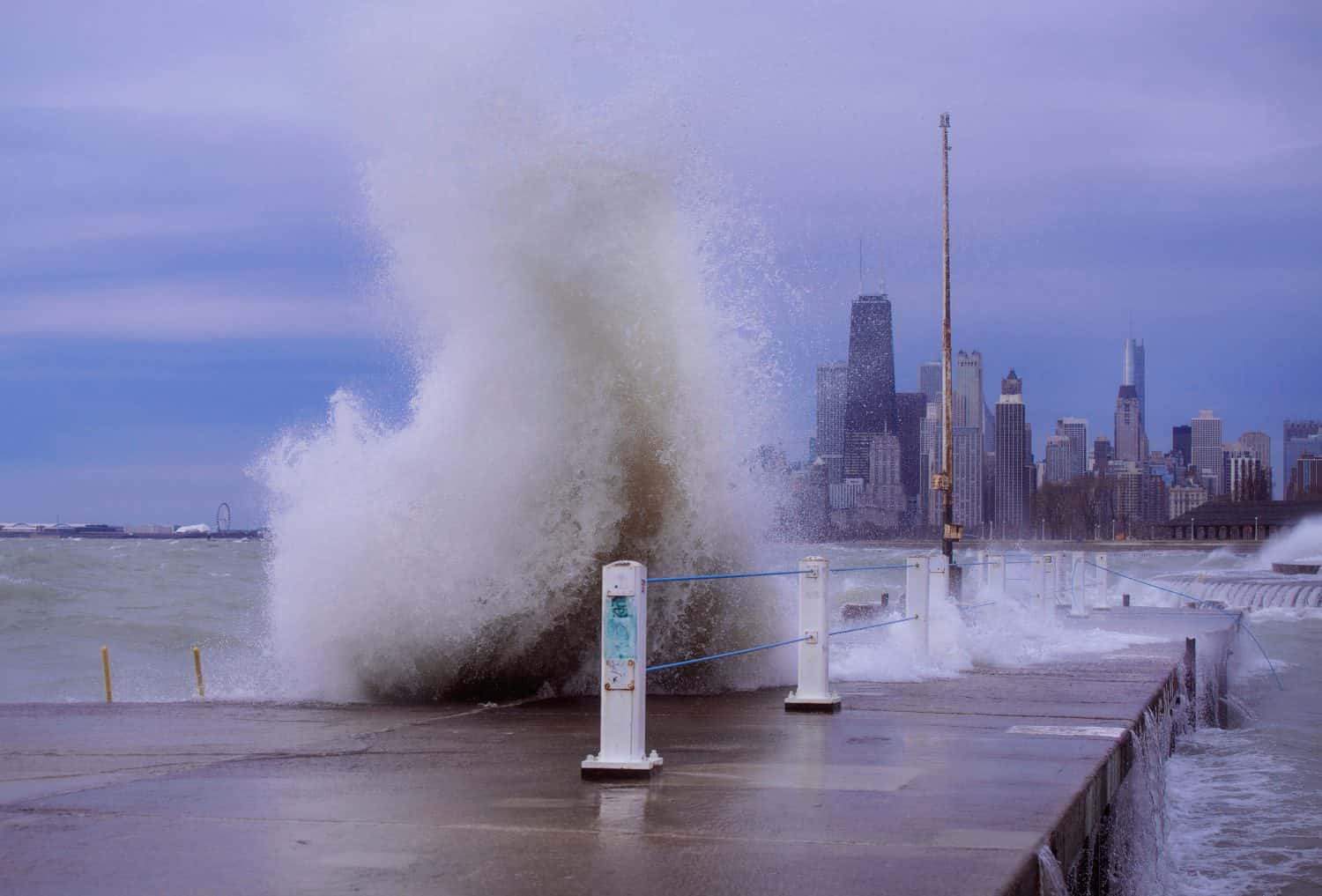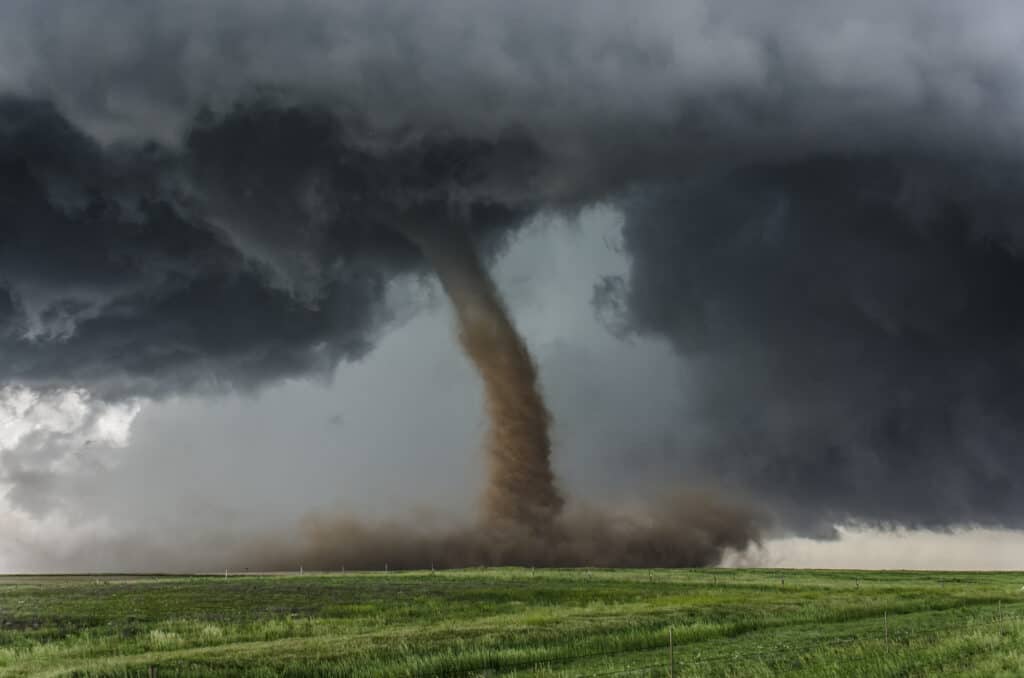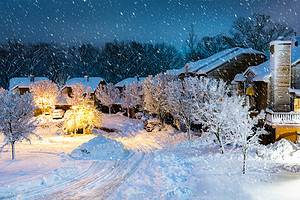Although Chicago is often called the “Windy City,” it’s not the windiest city in the country. That top honor goes to Dodge City, KS. Chicago doesn’t even break into the top ten windiest cities list. However, that doesn’t mean that it can’t get rather gusty in Chicago. Read on to discover the most powerful wind gusts that have whipped through the city.
What Is the Most Powerful Wind Gust to Hit Chicago?
Before we discuss the most powerful wind gust that Chicago has experienced, we need to determine if we are talking about sustained winds or a gust of wind. A sustained wind is the average wind speed for over two minutes. A gust, however, is a sudden burst of wind that typically lasts 20 seconds or less.
Excluding tornadoes, where winds can reach 250 to 300 miles per hour, the highest sustained wind speed to occur in Chicago was 87 miles per hour during a winter snowstorm on February 12, 1894.
However, the highest wind gust ever recorded in Chicago was 88 miles per hour at Midway Airport during a derecho on August 26, 1965. The record for the second-highest wind gust is 84 miles per hour at O’Hare International Airport during a severe thunderstorm on March 27, 1991. The second-highest record was tied on June 13, 2022, at Chicago O’Hare again when an 84-mile-per-hour gust occurred during a strong supercell thunderstorm.
The Chicago Snowstorm of 1894 (Winds: 87 Miles Per Hour)

Although not much snow fell on February 12, 1894, the high wind speeds caused blizzard conditions.
©Jake Hukee/Shutterstock.com
On February 12, 1894, Chicago received 7 inches of snow. While that amount of snow isn’t that much for Chicagoans, the winds whipped through the city, creating blizzard conditions. At 87 miles per hour, the sustained winds recorded that day have remained a Chicago record for well over one hundred years.
An archived Chicago Tribune article from the following day reports of icy conditions and debilitating snowdrifts of up to 15 feet high. According to the article, “snow whirled through the air by a gale of wind,” and “buried Chicago yesterday buried it so deeply that business of every kind was paralyzed.”
The Derecho of 1965 (Winds: 88 Miles Per Hour)

Gusty winds cause high waves on Lake Michigan to pound the city shoreline.
©Jake Hukee/Shutterstock.com
On August 26, 1965, a derecho whipped through the city. The storm caused wind gusts of 88 miles per hour, the highest ever recorded. The derecho, (a long-lived windstorm associated with a band of rapidly moving thunderstorms) rolled through the city in the middle of the night.
At midnight, torrential rains, hail, tornadoes, and powerful winds struck the city. Nearby suburbs recorded wind speeds of 100 miles per hour. In all, $7 million worth of damage was reported. In today’s dollars, $7 million equates to $68 million in 2023.
What’s the Impact of 80-Mile-Per-Hour Winds?
When winds reach high speeds of 70 to 80 miles per hour you can expect uprooted trees and downed power lines power. Most homes won’t see much structural damage at these speeds. However, the powerful winds can damage roofs, siding, and trim. Also, winds can destroy sheds, outbuildings, and mobile homes. During a winter snowstorm, 80-mile-per-hour winds can cause whiteout conditions and deep snowdrifts. Blowing snow can cover cars, lower visibility rates to zero, and bury houses.
Impacts to Wildlife

Raccoons like to nest in the hollows of old trees.
©Georgi Baird/Shutterstock.com
Humans aren’t the only ones that can suffer damage from severe wind speeds in northern Illinois. Although many animals will burrow or seek shelter during storms that produce high winds, it can still be deadly for wildlife. High winds may blow squirrel and bird nests from trees, causing young animals to lose their safe homes. Also, animals that nest in dead trees, such as raccoons, opossums, wood ducks, woodpeckers, screech owls, and squirrels, may find their homes uprooted during high winds.
What Is the Highest Wind Speed Ever Recorded During a Chicago Tornado?

A devastating tornado ripped through the Chicago suburbs in August of 1990.
©Minerva Studio/Shutterstock.com
The most powerful tornado to hit inside Chicago city limits was the violent tornado that occurred on April 21, 1967. The tornado registered F4 on the Fujita Scale, which means wind speeds were between 207 to 260 miles per hour. On this day, 33 people died and another 500 were injured by the tornado.
The only F5 tornado to strike Chicagoland didn’t happen within the city limits but in the suburbs of Oswego, Plainfield, Crest Hill, and Joliet. On August 28, 1990, a tornado formed near Oswego. The tornado traveled for 16 miles, killing 29, injuring 350, and causing $165 million in damage. An F5 tornado reaches wind speeds of 261 to 318 miles per hour.
Thank you for reading! Have some feedback for us? Contact the AZ Animals editorial team.







